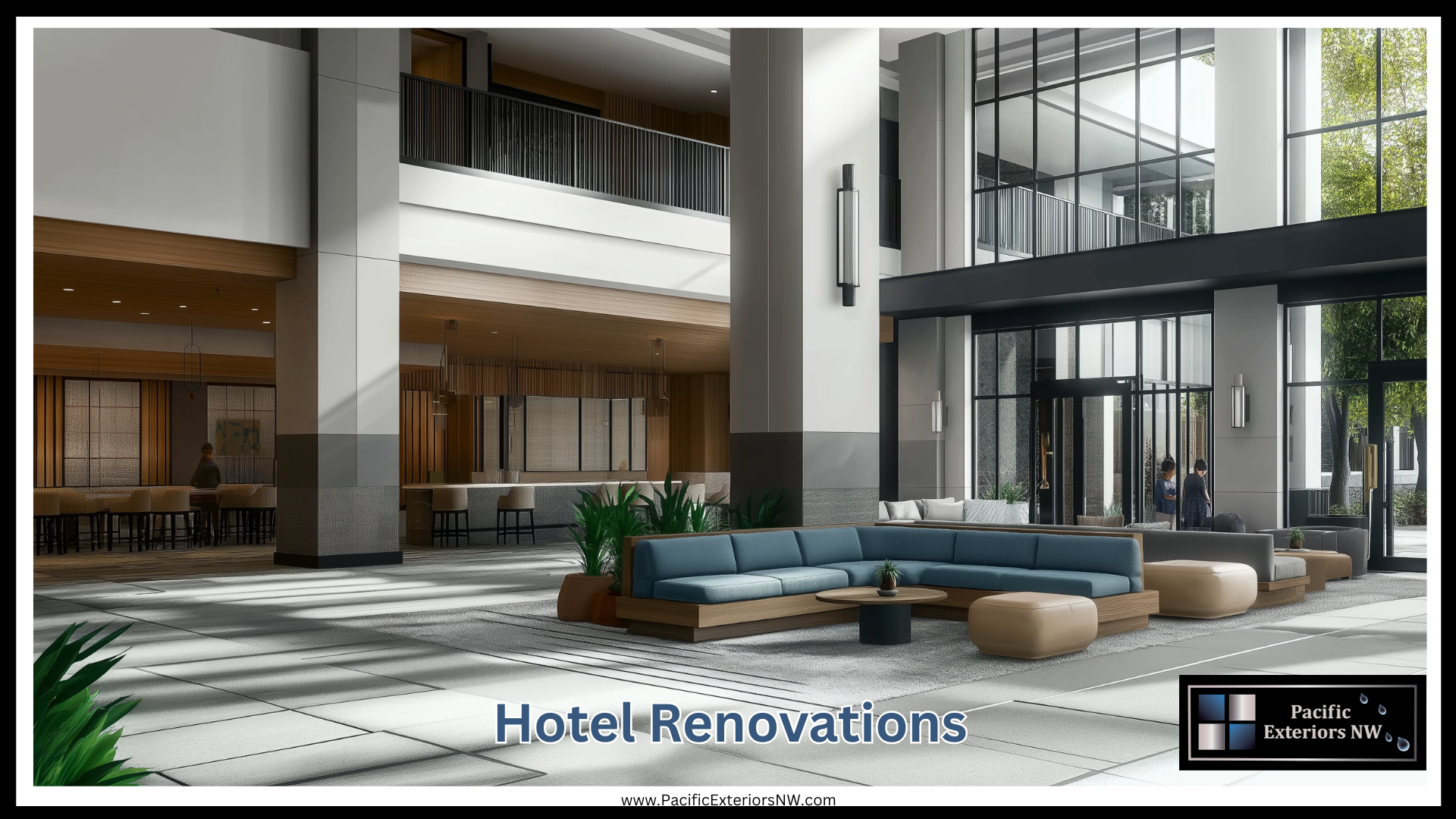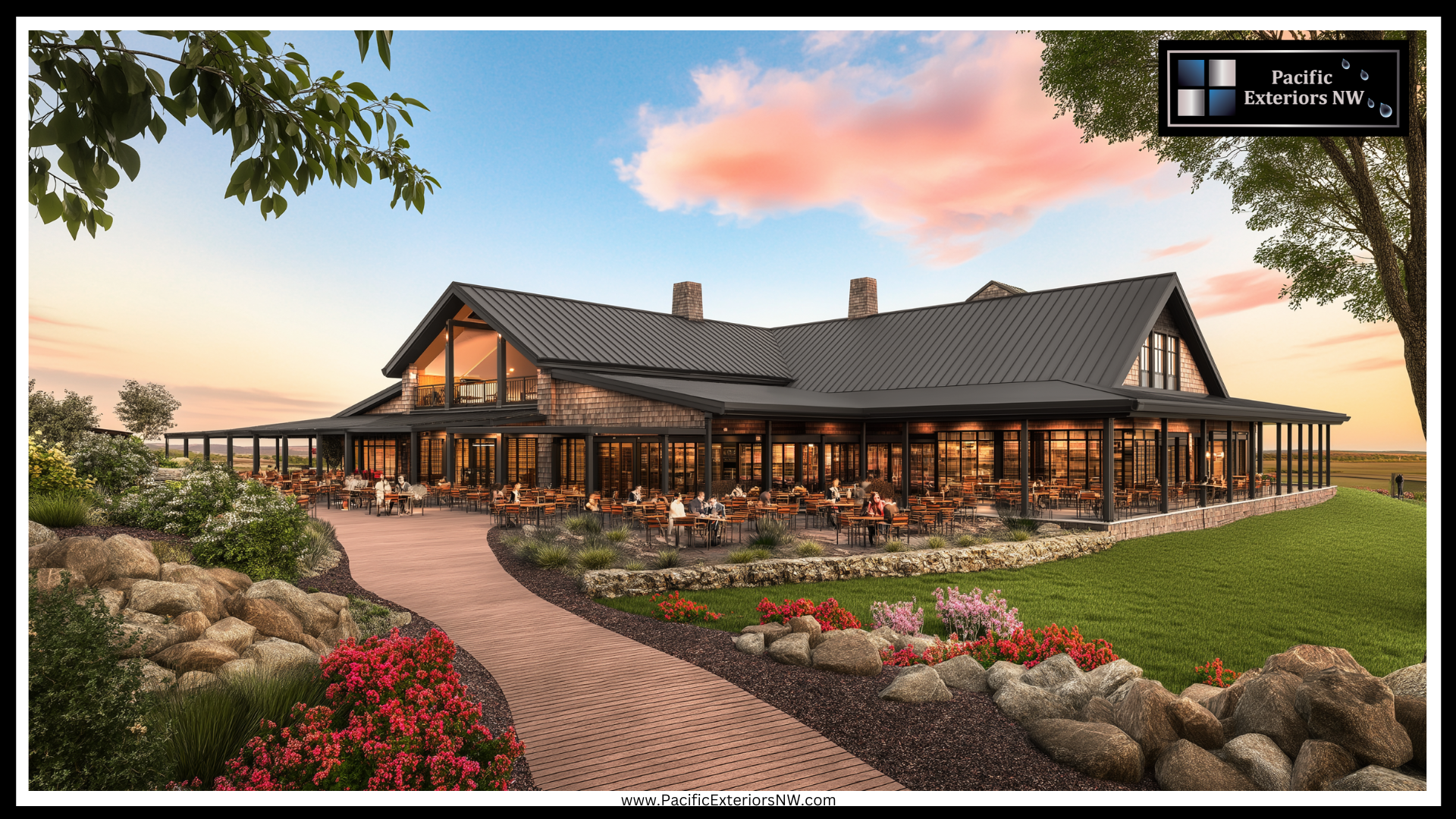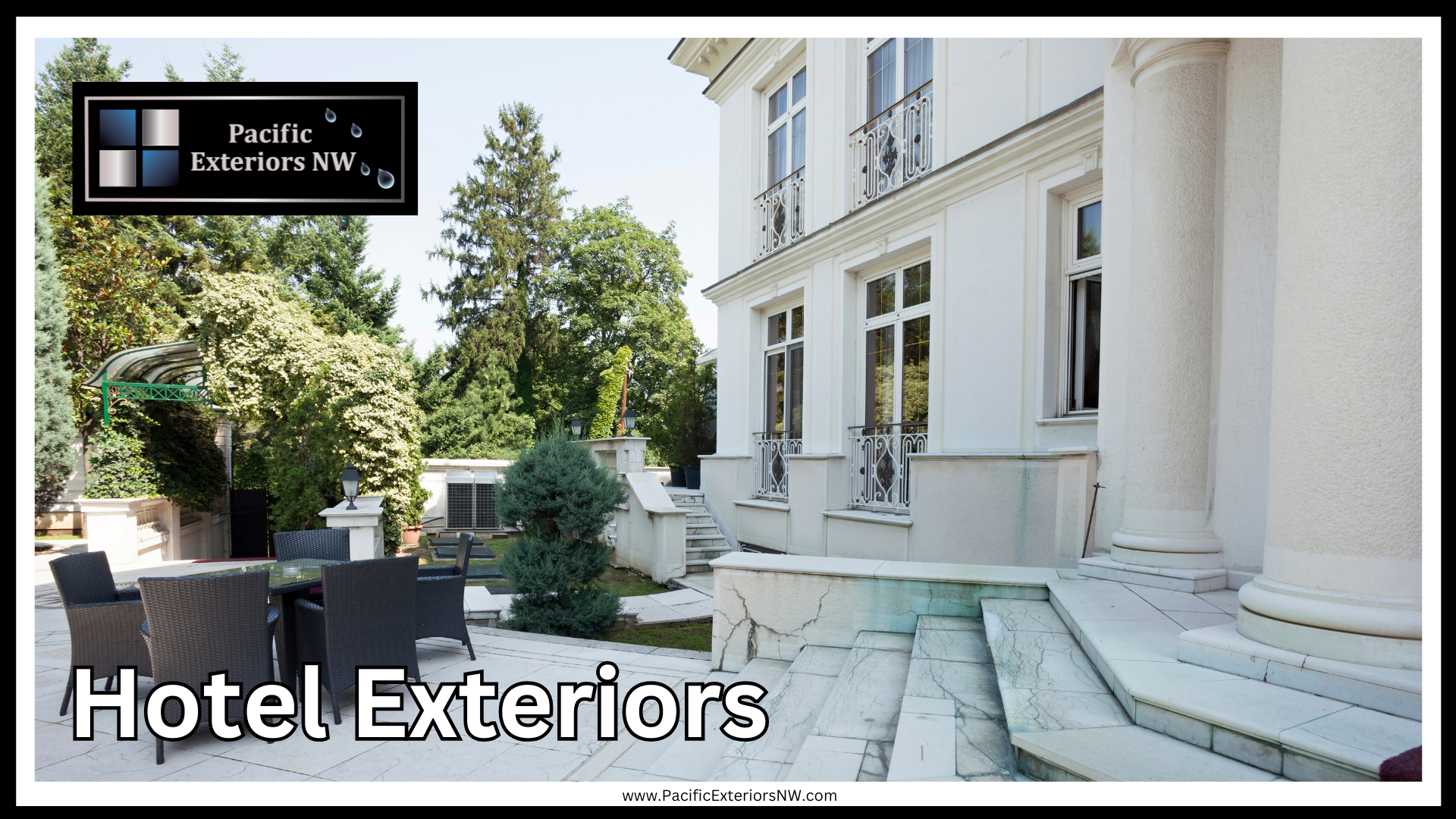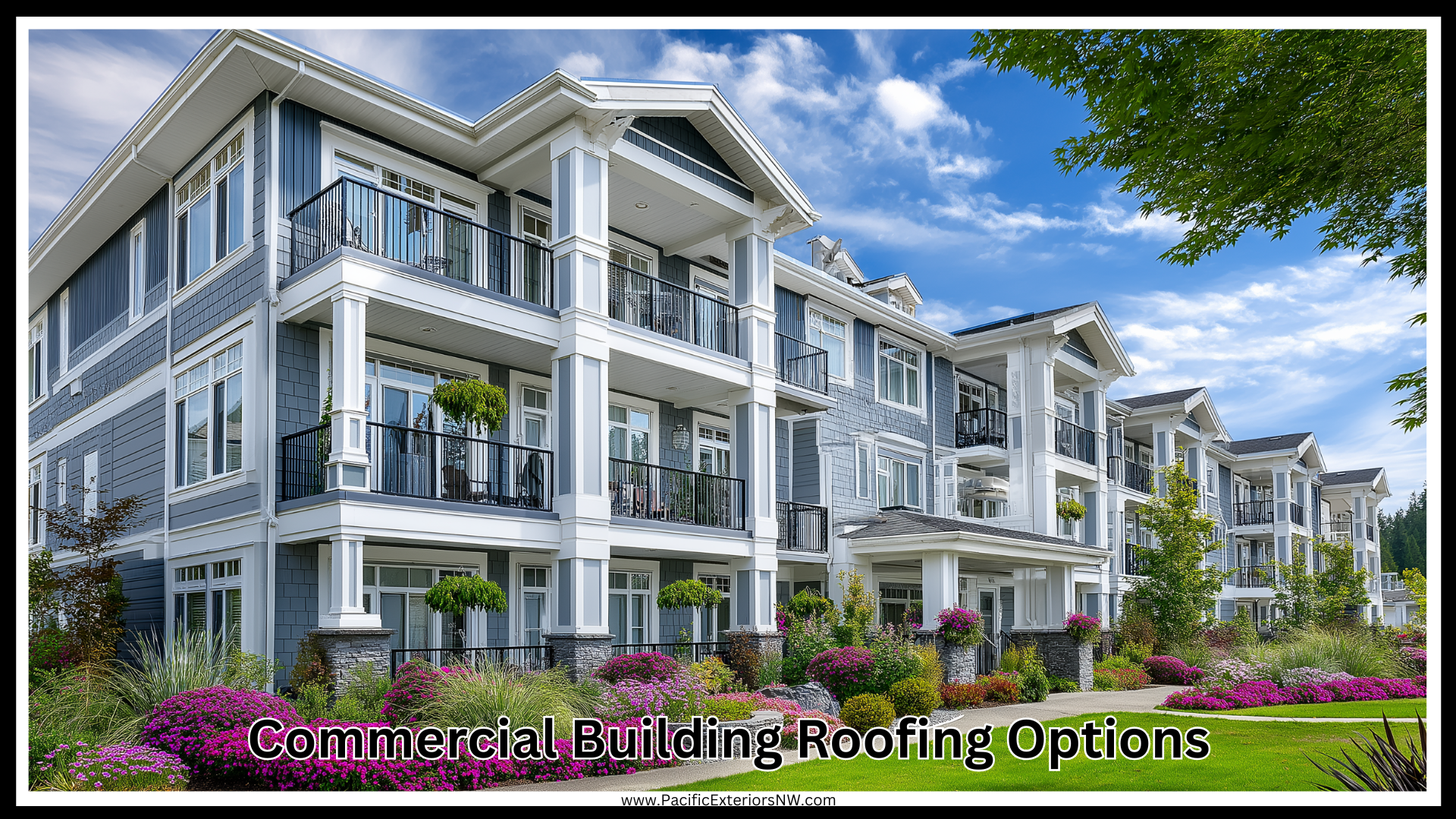
For commercial buildings across the Pacific Northwest, from coastal hotels to urban apartment complexes, your roof isn’t just a design element. It’s a structural and operational asset that must withstand heavy rain, high winds, moss growth, and ongoing exposure to regional conditions.
Selecting the right roofing system in the PNW means prioritizing performance, durability, and maintenance efficiency. This guide walks you through roofing materials, installation systems, and long-term care strategies for buildings in areas prone to moss and stormy environments.
Understanding the PNW Roofing Environment
From Washington to Oregon, the PNW climate introduces several roofing challenges:
- Heavy Rainfall & Wind Exposure: Roofing systems must provide wind-driven rain protection and secure attachment in areas prone to gusts.
- Persistent Moss Growth: Shaded, moist environments encourage the growth of moss and algae, requiring resistant materials and coatings.
- Freeze-Thaw Durability: Seasonal temperature swings demand flexible, resilient materials.
- UV & Thermal Expansion: Despite cloud cover, UV damage and thermal cycling still impact roof life.
- Debris & Corrosion: Tree litter, especially Douglas fir needles, and coastal salt air can accelerate material degradation.
Best Commercial Roofing Materials for Wind & Moss Resistance
1. Standing Seam Metal Roofing
- High wind ratings; panels interlock and fasten securely
- Naturally moss-resistant, low-maintenance
- Excellent lifespan and recyclable content
2. TPO & EPDM Membranes (Flat Roofs)
- Common in hotels and multifamily low-slope buildings
- UV- and moisture-resistant
- Seam-welded for waterproofing integrity
3. Architectural Composite Shingles
- Class 4 impact resistance
- Algae-resistant granules (often copper-infused)
- Upgraded nailing zones for high-wind applications
4. Synthetic Slate & Rubber Roofing
- Mimic traditional aesthetics with modern resilience
- Lightweight, moss- and crack-resistant
5. Clay or Slate Tiles (Luxury Applications)
- Exceptional durability and natural moss resistance
- Heavy—requires structural evaluation for use on multifamily buildings
6. Cedar Shakes (Treated)
- Require moss-resistant treatments and regular maintenance
- Used selectively on boutique or historic commercial properties
Wind-Resistant Roofing Features
Commercial roofs in the PNW should meet or exceed wind zone requirements:
- High Wind Uplift Ratings: Verified by ASTM testing
- Reinforced Nailing Patterns & Attachments: Improves wind hold
- Ridge Cap Reinforcement: Protects common failure points
- Hurricane Straps & Fasteners: Critical in coastal and elevated areas
- Impact Resistance: Especially in areas prone to hail or falling branches
- Wind-Driven Rain Protection: Underlayment and overlap design to prevent water intrusion
Moss Prevention for Commercial Roofs
Moss can shorten roof life, impact drainage, and cause tenant complaints. Proactive prevention includes:
- Zinc or Copper Strips: Installed along ridges to deter growth
- Algae-Resistant Shingles or Coatings: Prevent buildup before it starts
- Proper Roof Pitch: Steeper slopes shed water faster and deter moss
- Ventilation Systems: Reduce moisture retention under the roof deck
- Professional Moss Treatment Programs: Scheduled maintenance and soft-wash applications
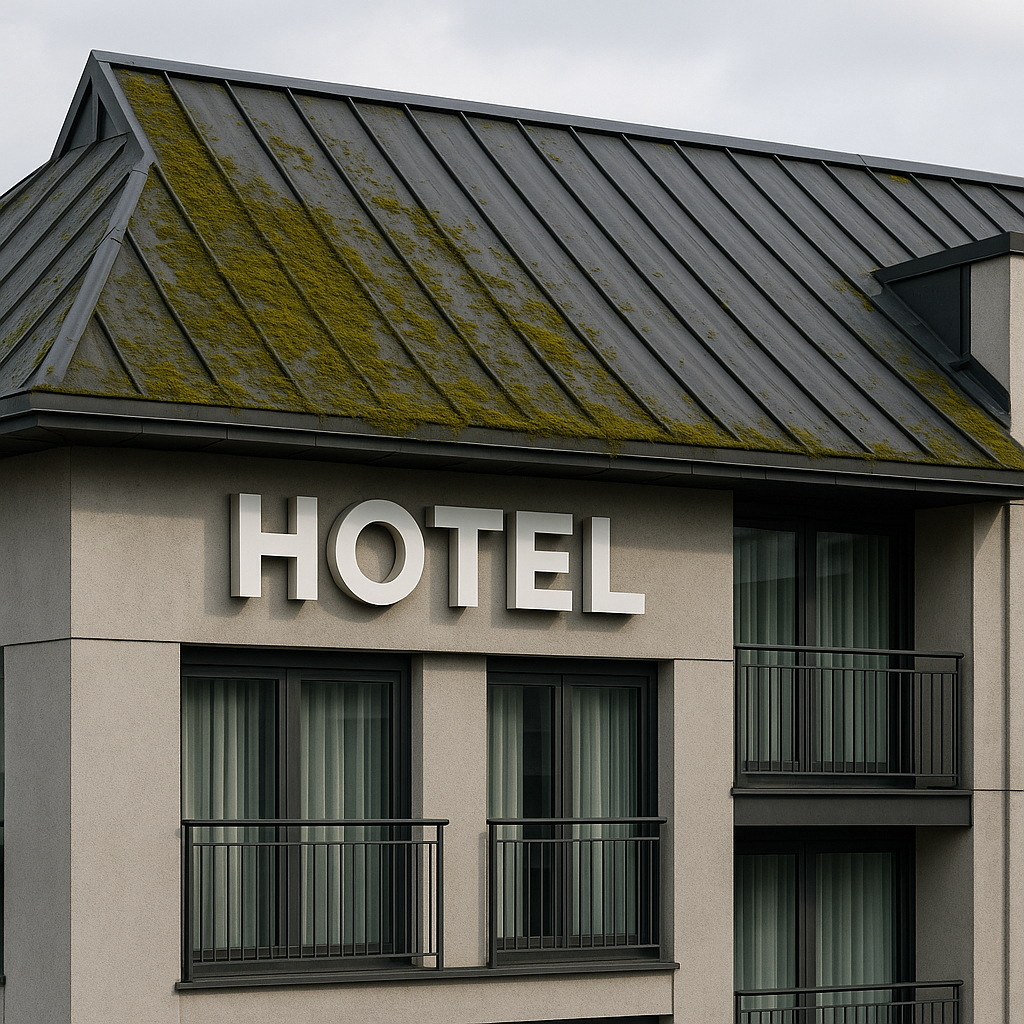
Installation Essentials for PNW Commercial Roofs
Effective performance starts with correct installation:
- Ice & Water Shield Membranes: Especially near eaves and valleys
- Flashing Integration: Chimneys, skylights, and roof-to-wall joints
- Starter Strips & Drip Edges: Essential for wind and water control
- Penetration Seals: Around vents and piping
- Ridge & Soffit Venting Systems: For balanced attic airflow
- Scuppers & Drainage for Flat Roofs: Must prevent pooling and overflow
Roof Maintenance Strategies
Preventive maintenance extends roof life and protects your investment:
- Annual Roof Inspections: Identify wear, drainage issues, or moss early
- Gutter and Downspout Cleaning: Prevent overflow and edge rot
- Debris Removal: Especially after storms or seasonal tree shedding
- Moss and Algae Treatment: Use commercial-grade treatments—not pressure washing
- Documented Maintenance Logs: Help with insurance, warranties, and resale value
PNW-Specific Roofing Codes & Performance Standards
Ensure all materials and assemblies meet regional and industry codes:
- ASTM Wind Ratings & Class 4 Impact Ratings: For tested durability
- Fire Resistance Ratings: Especially in wooded areas
- Energy Star or Cool Roof Ratings: For improved energy performance
- Seismic & Uplift Code Compliance: Essential for earthquake and storm resilience
Drainage Systems for PNW Buildings
Your roofing system must integrate with robust drainage:
- Oversized Gutters & Downspouts: Handle heavy rainfall
- Leaf Guards & Screens: Reduce clogging from fir needles
- Slope Design: Ensures quick runoff
- Interior Drains or Scuppers: Required for flat or low-slope roofs
- Overflow Systems: Secondary drainage pathways in case of blockages
Working with Commercial Roofing Professionals
You’ll need a trusted team to execute a durable roof system:
- Licensed Commercial Roofing Contractors: Ensure warranty eligibility
- Moss Treatment & Maintenance Providers: Offer ongoing care
- Gutter & Drainage Specialists: Integrate water management
- Inspection & Storm Response Services: For post-event assessments
Final Thoughts: Invest in a Roof That Works as Hard as Your Building
In the Pacific Northwest, roofing systems must do more than just keep the rain out. They must protect tenants, reduce maintenance demands, and withstand a region known for its high moisture, moss, and unpredictable weather.
By selecting wind and moss-resistant materials, using proper installation methods, and planning for long-term maintenance, you’ll gain a roof that performs reliably and extends the overall life of your commercial building.
Questions about your commercial roof? Pacific Exteriors NW has the answers!
Frequently Asked Questions (FAQs)
What’s the best roofing system for a flat-roofed apartment complex in the PNW?
TPO or EPDM membrane roofing offers excellent waterproofing and UV resistance for flat or low-slope applications, which are common in multifamily buildings.
How often should commercial roofs in the PNW be inspected?
At least once per year, plus after major storms or high-wind events. Preventive inspections catch small problems before they become expensive repairs.
Can moss-resistant roofing eliminate moss growth entirely?
No, but it significantly slows growth and makes maintenance easier. Pairing resistant materials with zinc or copper strips, along with a maintenance plan, is most effective.
Do commercial roofing systems require different permits in coastal areas?
Yes. Coastal installations often require additional uplift ratings, corrosion-resistant materials, and specialized fastening methods to comply with local codes.
What makes metal roofing ideal for Pacific Northwest hotels?
Metal roofing resists moss, sheds water quickly, has a long service life, and offers high curb appeal for hospitality buildings, especially when paired with modern designs.



